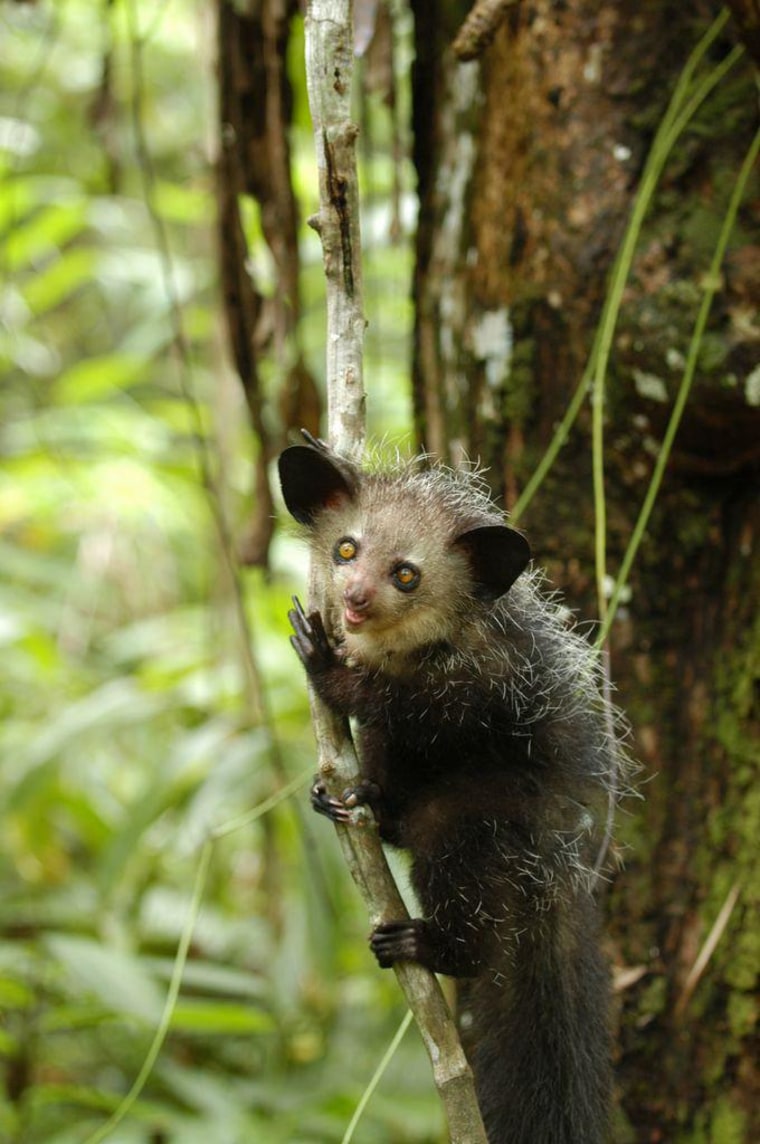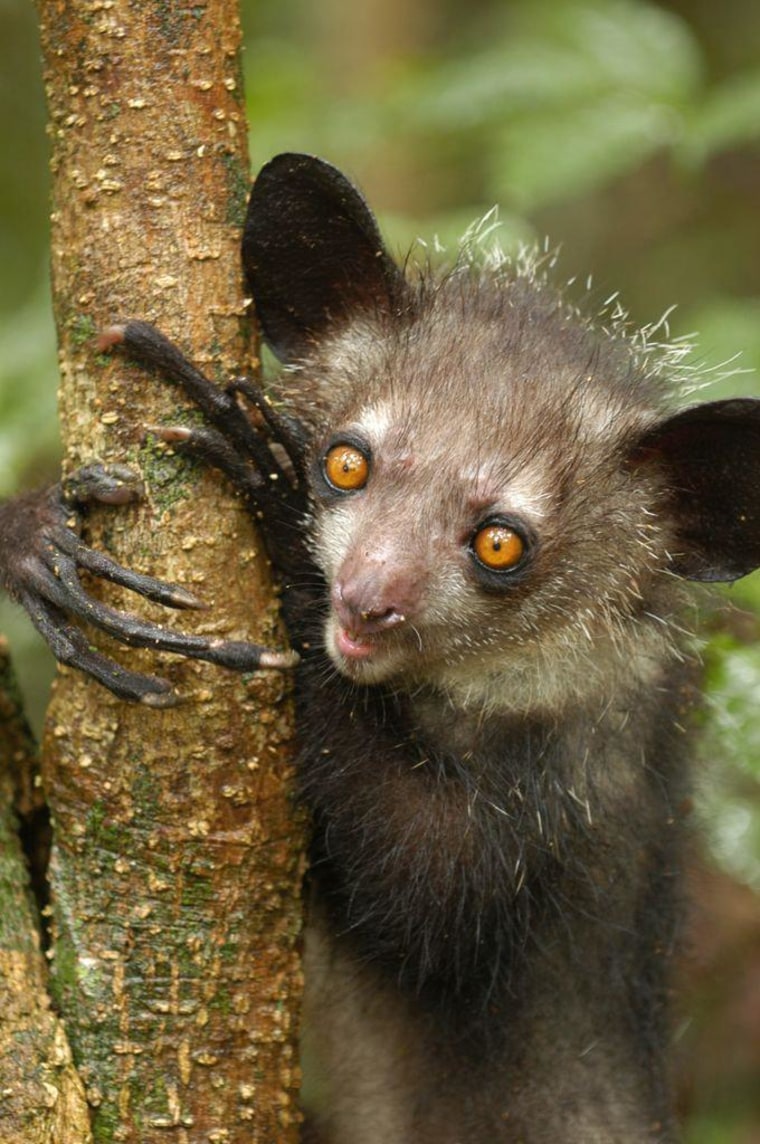A study of nocturnal lemurs in Madagascar known for their smarts, beaver-like teeth, and long, thin middle fingers may point to the future of endangered species conservation: cheap and fast genome analyses.
Researchers obtained and compared complete genomes from three separate populations of aye ayes and found that one is more distinct from the others than are humans of African and European descent, suggesting that the population warrants greater conservation attention.
"No emphasis has been placed on preserving the places where this one population exists in northern Madagascar," Patricia Wright, an anthropologist and world renowned lemur expert at Stony Brook University in New York, told NBC News.
Wright, who was not part of the new study, called it "extremely exciting" because it highlights previously unknown information about the genetic diversity of aye ayes that should impact conservation management plans. Similar use of genome analyses, she said, "is the wave of the future."
The genomes were obtained for about $2,800 each using sequencing technology that has only become available within the past five years, according to George Perry, an anthropologist at Pennsylvania State University, who led the study. Within a few years, further improvements may push prices even lower.
Aye ayes are an endangered species in part because locals consider them an omen of bad luck and kill them on sight. Their habitat is also increasingly fragmented due to logging and other human pressures.
These threats along with a large geographic distribution, low population densities and a slow rate of reproduction made aye ayes a prime target to test the ability of genome analyses to inform conservation management decisions, according to Perry.

"One of the goals of a conservation strategy," he explained to NBC News, "might be to preserve distinct genetic diversity or overall genetic diversity in order to achieve long-term survival." Genome sequencing, he added, can guide researchers on where to spend limited conservation funds.
The sequencing tools now available to conservationists were previously only available to teams with "huge resources," Perry noted. He and colleagues explain their method today in the Proceedings of the National Academy of Sciences and made the analytical tool kit publically available.
While the finding of a genetically distinct aye-aye population in northern Madagascar is new information, it fits with earlier studies suggesting the region is genetically isolated and thus full of genetically distinct creatures.
"It may mean if you preserve these habitats in northern Madagascar, you are probably not only preserving distinct aye-aye populations, it may be the same toward other populations in other species as well," Perry said.
For Wright, the aye ayes hold a special place in the story of lemur evolution. They are the only member in its family, one of five families of lemurs. They have the biggest brain-to-body ratio of any lemur, and fill a woodpecker-like foraging niche with long thin middle fingers they use to fish out larvae from trees.
"They can actually twirl the top of their finger around inside the log to grab those larvae," Wright said. "It is just amazing what they can do, so for many, many reasons, we really want to save the aye ayes."
John Roach is a contributing writer for NBC News. To learn more about him, check out his website.
